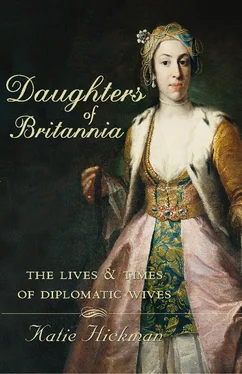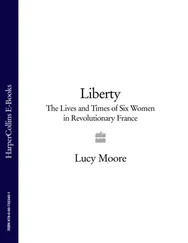1 ...8 9 10 12 13 14 ...22 For the most part, the strangeness of these lands was something which Mary had to endure before she could reach her destination. Unlike her successor, Vita Sackville-West, she found little in the Persian landscape to excite her imagination. ‘Sterile indeed was the prospect, and unhappily it proved to be an epitome of all the scenery in Persia, excepting on the coast of the Caspian,’ she wrote.
If Mary’s upbringing had ill-prepared her for the rigours of the journey, it had prepared her even less for the stark realities of life in Persia. At the border she veiled herself for the first time and, very much against their will, persuaded her two maids to follow her example.
At first the implications of this self-imposed purdah were lost amidst the excitement of their reception. The Persians welcomed them magnificently, as Mary recorded in her journal:
The Prince-Governor had most considerately sent a suite of tents for our accommodation; and on entering the principal one we found a beautiful and most ample collation of fruits and sweetmeats. His Royal Highness seemed resolved we should imagine ourselves still in Europe. The table (for there was one) was covered with a complete and very handsome European service in plate, glass and china, and to crown the whole, six bottles of champagne displayed their silvery heads, accompanied by a dozen other bottles of the wines of Spain and France.
More typical of her fate, however, was the ‘harem’ which had been prepared for her and her ladies – a small tent of gaily striped silk, with additional tents for her women servants, surrounded ominously by ‘a high wall of canvas’.
Colonel Sheil’s triumphal procession through Persia to Tehran is counterpointed in Mary’s journal by her growing realization that, as a woman, she would play no part at all in his public life. In Tabríz, in northern Persia, where thousands of people turned out into the streets to welcome them, ‘there was not a single woman, for in Persia a woman is nobody’. A tent was set up where the grandees of the town, who had come to meet them, alighted to smoke kalleeans and chibouks , to drink tea and coffee and to eat sweetmeats. Mary was obliged to remain in solitary seclusion while her husband received their visitors alone. Once the men had refreshed themselves, the entire procession was called to horse again, this time with a greater crowd than ever, including ‘more beggars, more lootees or mountebanks with their bears and monkeys, more dervishes vociferating for inam or bakshish …’
Excluded from these courtesies, and relegated ingloriously to the very tail of the procession along with the servants and the baggage, poor Mary found the show, the dust and the fatigue overwhelming. To make matters worse, at every village a korban , or sacrifice, was made in which a live cow or sheep was decapitated, and the blood directed across their path. * Although this ceremony was carried out in their honour, Mary was repelled and disgusted by it. Every last vestige of romance which Persia – the land of The Arabian Nights and Lalla Rookh – might once have held for her was swept away. In the towns she saw only dead horses and dogs, and a general air of decay; in the countryside only desolation and ‘a great increase of ennui’.
Mary Sheil completed her journey to Tehran in one of the strangest conveyances ever used by a diplomatic wife – a Persian litter known as a takhterewan , a kind of moving sofa ‘covered with bright scarlet cloth and supported by two mules’, while her two maids travelled in boxes, one on either side of a mule, ‘where, compressed into the minutest dimensions, they balanced each other and’ – no doubt echoing their mistress’s private thoughts – ‘sought consolation in mutual commiseration of their forlorn fate in this barbarian land.’ 21
*In recognition of her ground-breaking travels in Chinese Turkistan, Ella later became one of the first female Fellows of the Royal Geographical Society.
†A kind of small horse-drawn carriage.
*These special ‘double-lined native boots’ were a present to her from the orientalist and explorer Sir Aurel Stein.
*This was enough to furnish a very large villa. In those days only the houses of heads of mission were furnished by the government.
†Lord Nelson’s father was a close friend of Mr Blanckley’s.
*Although they were first published almost simultaneously, the difference in tone between these two handbooks is an interesting one. Annie Steel’s recipe for hysteria in her fellow sisters is wonderfully brisk: whisky and water, ‘and a little wholesome neglect’.
*A tea-gown was closely related to the modern dressing-gown, the difference being that a woman could perfectly respectably wear it in public.
†A stout waterproof cloak.
*A horse litter.
†A boat-shaped basket resting on long poles, drawn by three horses abreast.
*In the course of her long diplomatic career Lady Susan saw sex around every corner. Her brilliantly self-aggrandizing memoirs contain the heading, ‘How I once diplomatically fainted to avoid trouble with a German swashbuckler’.
*A government messenger, ‘nearly as powerful at the post-houses as the Czar himself’.
*In order that all misfortunes and evils should be drawn onto the sacrificial animal rather than onto the travellers.
To Mary Sheil, nervous and exhausted from nearly four months’ travelling, the British residence in Tehran must have seemed like a haven from the horrors of the barbarous and teeming streets outside. ‘I passed through a pretty English garden, and then entered an excellent, and even stately-looking English, or rather Italian dwelling of considerable size,’ she wrote. But the house itself was not the only wonder in store for her. ‘I was still more surprised when an extremely well-dressed Persian entered the room and said to me, in an accent savouring most intensely of the “Cowgate”, “Wi’ ye tak ony breakfast?” This was Ali Mohammed Beg, the mission housekeeper, who had acquired a fair knowledge of English from a Scotch woman-servant.’
Despite this auspicious beginning, it was not long before Mary came to realize that the house, beautiful as it was, was not so much a haven as a prison. As she had so forlornly discovered on her journey, in Persia a woman was no one. The journal which she wrote to alleviate the loneliness and almost total isolation of her four years in Persia records all too clearly the monotony of her life: ‘To a man the existence is tiresome enough, but to a woman it is still more dreary.’ As was so often the case in these diplomatic partnerships, her husband was occupied with his job, with sports, visits, and ‘the gossip and scandal of the town, in which he must join whether he likes it or not’. The conditions under which a woman found herself obliged to live were very different: ‘She cannot move abroad without being thickly veiled; she cannot amuse herself by shopping in the bazaars, owing to the attention she could attract unless attired in Persian garments.’ But any European woman who managed to escape suffocation beneath the roobend , * would surely have been half-crippled by the tiny shoes, barely covering half the foot, with a small heel three inches high in the middle of the sole.
Unlike so many of her successors – and predecessors – in postings in which the seclusion of women was practised, Mary was as much a victim of her own prejudices as the local customs. In her view the acquaintance of only a very few of the Tehran ladies was considered desirable at all; none of them were Persians. The Russian mission, she complained, was too far away for her to be able to cultivate the friendship of ‘Princess D’ and her ‘aimiable daughter’, while the remaining female society was limited to just one or two other ladies, the wives of foreign officers in the Shah’s service. Tehran, she wrote rather plaintively, was ‘one of the most frightful places in the world’ and her life there resembled that of a nun. Although on several occasions she did go to visit the Shah’s mother in the palace harem, it does not seem to have occurred to her that such women might have been seen as equals rather than as exotic curiosities.
Читать дальше












